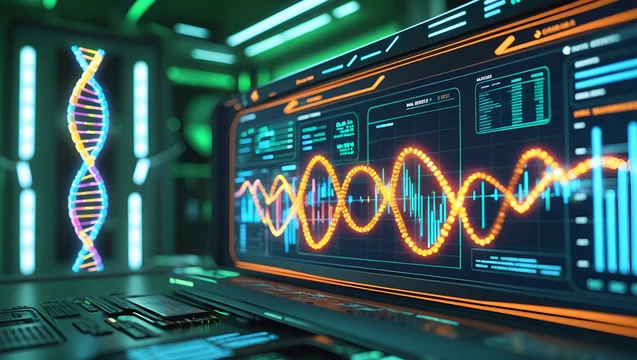Next-generation sequencing (NGS) has changed the way scientists study DNA and RNA. Once limited by the speed and cost of traditional Sanger sequencing, researchers now rely on NGS to process vast amounts of genetic information quickly and affordably. From cancer research to rare disease diagnosis, NGS is now a cornerstone technology in both clinical and research settings.
What Is Next-Generation Sequencing?
At its core, next-generation sequencing is a method for reading millions—or even billions—of DNA or RNA fragments simultaneously. Unlike first-generation sequencing methods, which process one strand at a time, NGS platforms work in parallel, dramatically speeding up data collection and expanding the scale of what’s possible.
Key Advantages of NGS
Speed and Scale: NGS can sequence entire genomes, exomes, or targeted gene panels in a fraction of the time older methods required.
- Cost-Effectiveness: With high-throughput capabilities, the cost per sample has dropped significantly compared to traditional sequencing.
- Versatility: NGS supports applications across genomics, transcriptomics, epigenetics, and metagenomics.
Popular Applications of NGS
Cancer Genomics
NGS helps identify mutations, copy number variations, and structural changes in tumor DNA, guiding both research and personalized treatment plans.
2. Inherited Disease Research
Whole-exome or whole-genome sequencing can uncover genetic causes of rare diseases that would otherwise go undiagnosed.
3. Microbiome Studies
Researchers use NGS to analyze complex microbial communities, identifying species composition and functional genes.
4. Infectious Disease Surveillance
NGS has played a critical role in tracking viral mutations, most notably during the COVID-19 pandemic.
How Does Next-Generation Sequencing Work?
While workflows can vary slightly by platform, most NGS processes follow these core steps:
- Library Preparation: DNA or RNA is fragmented and tagged with adapters.
- Amplification: Fragments are amplified to create clusters.
- Sequencing: NGS machines read each fragment’s base sequence.
- Data Analysis: Bioinformatics tools process raw data into usable insights.
NGS Platforms: Choosing the Right Fit
Different sequencing platforms offer varying read lengths, throughput capacities, and costs. Commonly used systems include:
- Illumina: Known for high accuracy and wide adoption in research and clinical labs.
- PacBio: Specializes in long-read sequencing, useful for structural variant detection.
- Oxford Nanopore: Offers portable sequencing with real-time data generation.
Choosing the right platform depends on project goals—whether you’re sequencing a single gene panel or an entire human genome.
Challenges and Considerations
Despite its many advantages, NGS also presents challenges:
- Data Volume: Sequencing generates massive datasets requiring robust storage and processing infrastructure.
- Interpretation Complexity: Identifying clinically relevant variants from raw data demands specialized bioinformatics expertise.
- Quality Control: Ensuring high-quality input samples and proper workflow execution is critical for accurate results.
Why NGS Matters for the Future of Medicine
Next-generation sequencing isn’t just a research tool—it’s actively improving patient care. From identifying actionable mutations in cancer treatment to uncovering rare genetic conditions, NGS is central to the growth of precision medicine. As technology continues to advance, we can expect even faster turnaround times, reduced costs, and broader adoption across healthcare systems worldwide.

Isreal olabanji a dental assistant and public health professionals and has years of experience in assisting the dentist with all sorts of dental issues.
We regularly post timely and trustworthy medical information and news on Fitness, Dental care, Recipes, Child health, obstetrics, and more.


